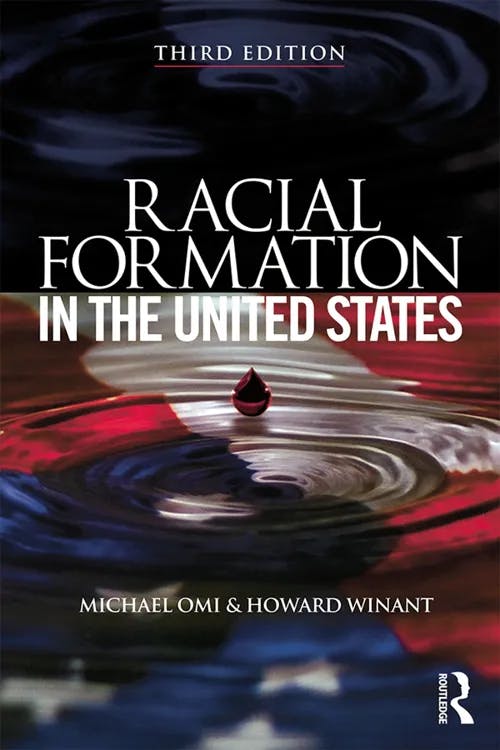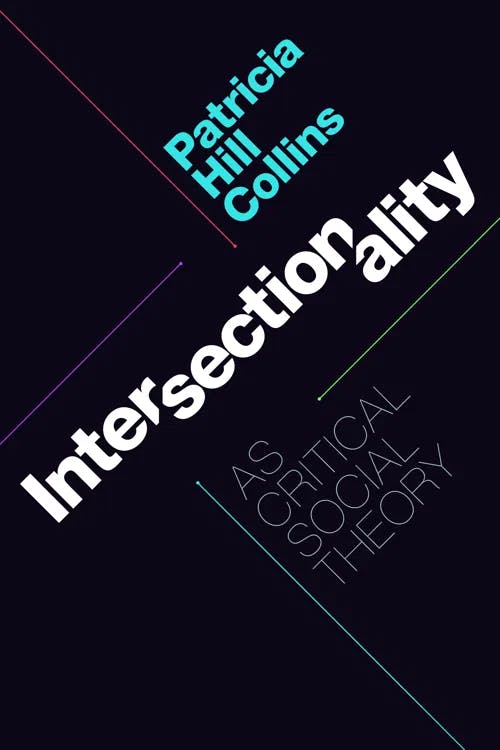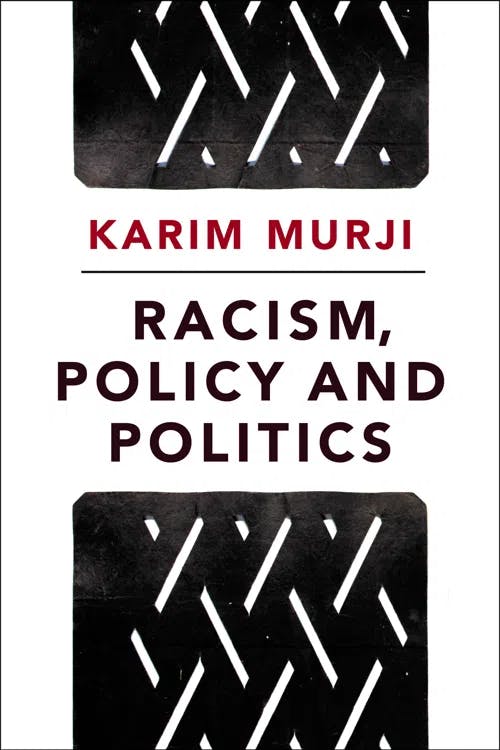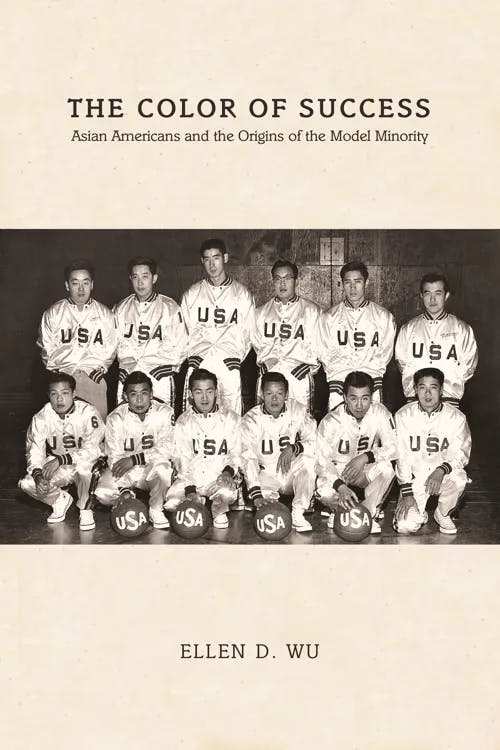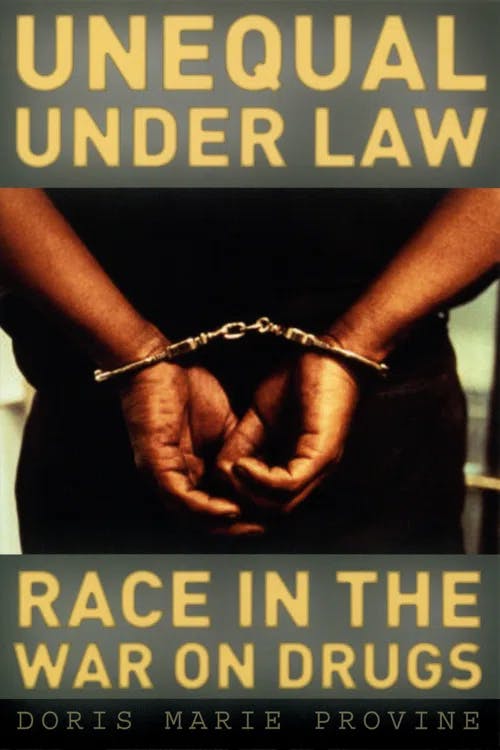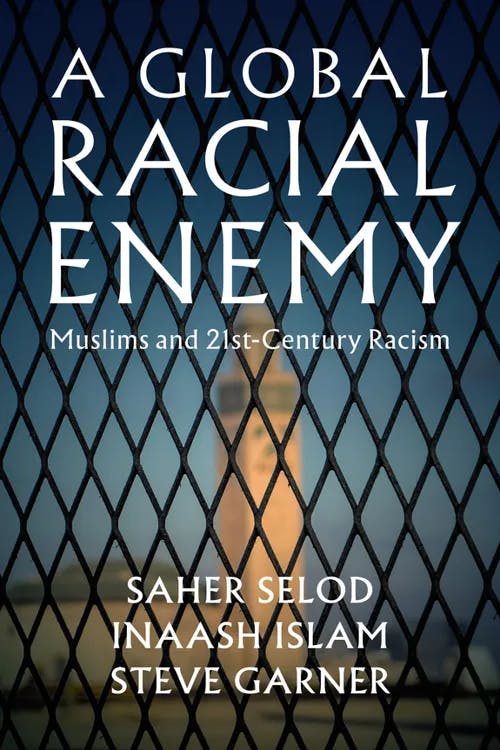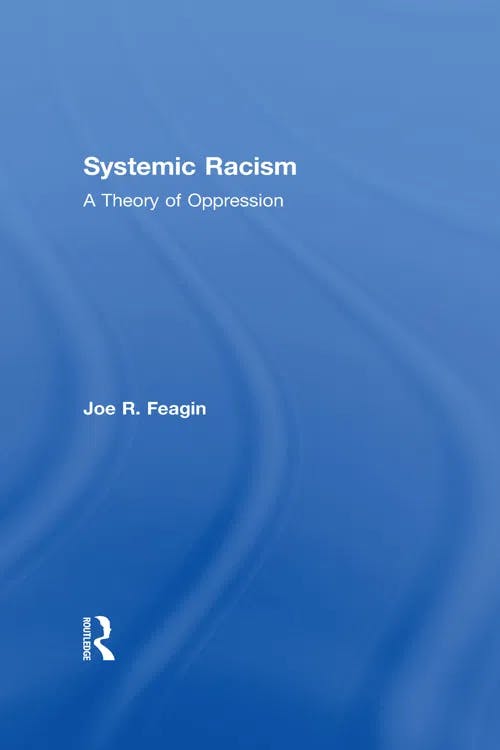What is Racial Formation Theory?
PhD, English Literature (Lancaster University)
Date Published: 08.04.2024,
Last Updated: 08.04.2024
Share this article
Definition
Racial formation theory puts forth that race is constructed and subject to change over time; it was developed by sociologists Michael Omi and Howard Winant. Their work Racial Formation in the United States seeks to understand how racial identity is created within specific sociohistorical contexts:
The process of race making, and its reverberations throughout the social order, is what we call racial formation. We define racial formation as the sociohistorical process by which racial identities are created, lived out, transformed, and destroyed. (Omi and Winant, 1986, [2014])
Michael Omi and Howard Winant
The process of race making, and its reverberations throughout the social order, is what we call racial formation. We define racial formation as the sociohistorical process by which racial identities are created, lived out, transformed, and destroyed. (Omi and Winant, 1986, [2014])
Omi and Winant go on to explore how these racial categories and hierarchies have been formed in the US and the social, political, cultural, and economic consequences of this categorization.
Racial formation theory emerged as a response to the idea that we live in a post-racial society since the end of the civil rights movement:
“Race thinking,” it is argued, no longer significantly informs our perceptions, shapes our attitudes, and influences our individual, collective, and institutional practices. Indeed, it is said that the most effective anti-racist consciousness, policy, and practice is simply to ignore race. We are urged to see people as individuals only, not as persons or groups whose identities or social positions have been shaped and organized by race. (Omi and Winant, 1986, [2014])
The phrase “I just don’t see race” and its variations indicate we live in a “colorblind” society that has moved past racial prejudice. As scholar Patricia Hill Collins writes,
Racial formation theory also applies to color-blind racism that accompanies racial integration. Within a color-blind racial formation, people misrecognize racial hierarchy, fail to see racial discrimination, and, by choosing to remain “blind” to racism, perpetuate it. Because laws and ideology ostensibly forbid or censure racial discrimination, it seems easy to assume that racism either never existed nor does not currently exist. (Intersectionality as Critical Social Theory, 2019)
Patricia Hill Collins
Racial formation theory also applies to color-blind racism that accompanies racial integration. Within a color-blind racial formation, people misrecognize racial hierarchy, fail to see racial discrimination, and, by choosing to remain “blind” to racism, perpetuate it. Because laws and ideology ostensibly forbid or censure racial discrimination, it seems easy to assume that racism either never existed nor does not currently exist. (Intersectionality as Critical Social Theory, 2019)
Many critics have tended to see race as either objective (an essence or rooted in biological factors) or as an illusion (an ideological construct, something that masks a more fundamental material distinction or axis of identity). Omi and Winant, however, are critical of both positions:
Race is not something rooted in nature, something that reflects clear and discrete variations in human identity. But race is also not an illusion. While it may not be “real” in a biological sense, race is indeed real as a social category with definite social consequences. (1986, [2014])
We can see that race still plays a significant role at economic, social, cultural, and political levels, as evident in the wealth gap between white and non-white people, mass incarceration, and redlining. As such, the suggestion that we live in a colorblind society undermines the discrimination suffered as a result of racialization, both current and historical.
Omi and Winant argue that
The task for theory is to capture this situation and avoid both the utopian framework that sees race as an illusion we can somehow “get beyond,” as well as the essentialist formulation that sees race as something objective and fixed, a biological given. We should think of race as an element of social structure rather than as an irregularity within it; we should see race as a dimension of human representation rather than an illusion. Such a perspective informs what we mean by racial formation. (1986, [2014])
In this guide, we will explore the impact of racialization, historical concepts of race, the fluid nature of race, and how racial constructs and hierarchies are established and maintained in the US through racial projects.
Racialization
Omi and Winant begin their discussion of racial formation theory by presenting a concept of race which “emphasize[s] how the phenomic, the corporeal dimension of human bodies, acquires meaning in social life” (1986, [2014]). This means that the differences in phenotype (i.e., observable characteristics between races, such as skin color, hair texture, or facial structure) while “ocular” are “not necessarily seen or understood in the same consistent manner across time and place” (Omi and Winant, 1986, [2014]). While these physical attributes remain the same, the meaning placed upon those attributes changes based on sociohistorical context. This is known as racialization: “the extension of racial meaning to a previously racially unclassified relationship, social practice, or group” (Omi and Winant, 1986, [2014]).
Through stereotypes, prejudice, and a range of political, historical, and social factors, race becomes more than phenotypes. Race takes on a social dimension and is used as a tool of oppression: “racial phenotypes such as black and white have been constructed and encoded through the language of race” (Omi and Winant, 1986, [2014]).
We can see this evident in racial profiling, which refers to suspecting or actively targeting a group or individual because of their race.
Historical concepts of race
As racial formation is dependent upon historical context, our understanding of race has changed over time. Omi and Winant provide a survey to see how race has been conceptualised throughout history, revealing the “unstable and ambiguous character” of race (1986, [2014]).
Racialized social structures, and discourses on racial difference, began to emerge when European colonizers arrived in the Americas as part of their imperialist ambitions. Here, not only did European explorers discover new resources and the opportunity for primitive accumulation, but they also encountered the indigenous people:
The representation and interpretation of the meaning of the indigenous peoples’ existence became a crucial matter, one that would affect not only the outcome of conquest but the future of empire and thus the development of the modern world. For the “discovery” raised disturbing questions as to whether all could be considered part of the same “family of man,” and more practically, the extent to which native peoples could be exploited and enslaved. (Omi and Winant, 1986, [2014])
The “conquest of America” was “the advent of a consolidated social structure of exploitation, appropriation, domination, and signification. Its representation, first in religious terms, but later in scientific and political ones, initiated modern racial awareness” (Omi and Winant, 1986, [2014]).
Imperialism solidified a new structure in which there was a struggle between perceptions of civilization and barbarism. It categorized racial groups, placing white Europeans as a master category of race. The need to classify and distinguish racial groups had begun to surface:
Who was a European, a settler, a free man, and who was an Indio, an African, a slave? As a practical matter, something relatively devoid of theology or philosophy, the exercise of power required these distinctions. (Omi and Winant, 1986, [2014]).
Initially, distinctions between different racial groups were made based on phenotypes creating a biological understanding of race; visual appearance made categorization obvious and efficient. From this, we begin to see the emergence of biological understandings of race, in which phenotypical characteristics became signifiers of physical, moral, and intellectual development.
Biological/scientific accounts of race
Biological accounts of race would, in the nineteenth century, see the emergence of scientific racism, i.e., the misuse of science to categorize people into distinct biological races, with the view of promoting the belief that certain races are superior. Examples of work from this era that either tout a scientific basis for racism, or have been used to justify such prejudices include Charles Darwin’s The Descent of Man and Selection in Relation to Sex (1871), and his cousin, eugenicist Francis Galton’s Hereditary Genius (1869).
Following World War II, such views on race were largely discredited. As Karim Murji writes,
For much of the 20th century [...] there has been a general scientific consensus that race is not a scientific category. Human genetic variation is greater within the ‘same’ racial group than between supposed racial groups and there is no scientifically reliable basis on which people can be grouped into races. (Racism, Policy and Politics, 2017)
Karim Murji
For much of the 20th century [...] there has been a general scientific consensus that race is not a scientific category. Human genetic variation is greater within the ‘same’ racial group than between supposed racial groups and there is no scientifically reliable basis on which people can be grouped into races. (Racism, Policy and Politics, 2017)
For more on this, see our guide “What is Social Darwinism?”
However, as Omi and Winant point out, biological concepts of race continue in science to an extent as a way to discern between different population groups, ultimately resulting in an “increasing re-biologization of race” (1986, [2014]).
From biology to politics
There has been a shift from a biological to a political understanding of race, with Omi and Winant arguing that “race is now a preeminently political phenomenon”:
The racial horrors of the 20th century— colonial slaughter and apartheid, the genocide of the Holocaust, and the massive bloodlettings required to end these evils— have also indelibly marked the theme of race as a sociopolitical issue par excellence. (1986, [2014]).
The influence of politics in racial formation is evident in the development of the racial categories in the US Census. In 1977, Directive 15 mandated that racial information was to be collected for statistical and administrative reporting, and civil rights compliance. The five categories were American Indian or Alaskan Native, Asian or Pacific Islander, Black, White, and Hispanic. However, as Omi and Winant argue,
These racial categories are rife with inconsistencies and lack parallel construction. Only one category is specifically racial, only one is cultural, and only one relies on a notion of affiliation or community recognition. Directive No. 15 defines a black person as one who has his or her “origins in any of the black racial groups of Africa,” but it does not define a white person with reference to any of the white racial groups of Europe, North Africa, or the Middle East. Indeed “Black” is the only category that is defined with an explicit “racial” designator— one which is quite problematic. (1986, [2014]).
They go on to argue that such classifications are unstable and result in a gap between the state definitions and self-identification of these groups. (For more information, see Peter Skerry’s Counting on the Census?, 2000)
The fluidity of race
As we can see from the examples throughout history, race is not a static category, but one which is dependent upon sociohistorical contexts:
The very act of defining racial groups is a process fraught with confusion, contradiction, and unintended consequences. Concepts of race prove to be unreliable as supposed boundaries shift, slippages occur, realignments become evident, and new collectivities emerge. State-imposed classifications of race, for example, face continuing challenges by individuals and groups who seek to assert distinctive racial categories and identities. Historical shifts in scientific knowledge, in fields ranging from physical anthropology to the genomic sciences, fuel continuing debates about what race may or may not mean as an indicator of human variation. (Omi and Winant, 1986, [2014]).
A key example of this is given by Karen Brodkin in her book How Jews Became White Folks and What that Says about Race in America (1998). Brodkin explains that prior to World War II, Jews were, like other immigrants in the US, subject to discrimination and denied citizenship. At the end of the war, however, this all changed:
Suddenly, the same folks who had promoted nativism and xenophobia were eager to believe that the Euro-origin people whom they had deported, reviled as members of inferior races, and prevented from immigrating only a few years earlier, were now middle-class white suburban citizens. (Brodkin, reprinted in Off White, 2012)
Edited by Michelle Fine, Lois Weis, Linda Powell Pruitt, and April Burns
Suddenly, the same folks who had promoted nativism and xenophobia were eager to believe that the Euro-origin people whom they had deported, reviled as members of inferior races, and prevented from immigrating only a few years earlier, were now middle-class white suburban citizens. (Brodkin, reprinted in Off White, 2012)
As Brodkin argues, Jewish people in the US became, much like Irish or Italian immigrants, “assimilated” into US native culture and “became white” (1998, [2012]). This racial transformation is correlated with the affluence of the Jewish people:
As with most chicken-and-egg problems, it is hard to know which came first. Did Jews and other Euro-ethnics become white because they became middle class? That is, did money whiten? Or did being incorporated into an expanded version of whiteness open up the economic doors to middle-class status? Clearly, both tendencies were at work. (Brodkin, 1998, [2012])
This “more inclusive” version of whiteness was a reaction to the war against fascism and resulted in “Euro-immigrants and their children [becoming] more securely white by submersion in an expanded notion of whiteness” (1998, [2012]).
As we can see here, the meaning and significance of race are subject to historical events (in this case World War II), shifts in political ideologies (such as fascism), and evolving definitions of class.
A further example of how race perception changes over time is shown in Chinese and Japanese Americans moving from being viewed as “unassimilable aliens” to a “model majority” in the 1940s and 1950s:
The model minority is a wonderfully telling example demonstrating that racial categories are never static or omnipresent, that they change over time and vary across space, and that they pivot on the contemporaneous making and remaking of other racial categories. It also vividly illustrates how productions of race are crucially determined by confluences with other axes of identification—in this case, gender, sexuality, class, and nation. (Ellen D. Wu, The Color of Success, 2013)
Ellen D. Wu
The model minority is a wonderfully telling example demonstrating that racial categories are never static or omnipresent, that they change over time and vary across space, and that they pivot on the contemporaneous making and remaking of other racial categories. It also vividly illustrates how productions of race are crucially determined by confluences with other axes of identification—in this case, gender, sexuality, class, and nation. (Ellen D. Wu, The Color of Success, 2013)
This movement towards becoming a model minority was done, in part, through Japanese and Chinese Americans “purposefully conforming to the norms of the white middle class” (Wu, 2013).
Race as a master category
While race is clearly an unstable category, its ability to shape and transform our political, cultural, social, and economic lives has remained consistent throughout history. Omi and Winant argue that race is, in fact, a master category, i.e., “a fundamental concept that has profoundly shaped, and continues to shape the history, polity, economic structure, and culture of the United States” (1986, [2014]). They go on to suggest that
the establishment and reproduction of different regimes of domination, inequality, and difference in the United States have consciously drawn upon concepts of difference, hierarchy, and marginalization based on race. (Omi and Winant, 1986, [2014]).
Historically, European colonizers were able to create, transform, and contest racial categories. The violent suppression of marginalized groups in the name of colonization and imperialist expansion created “a template, a master frame” that laid the foundation for the continued discrimination of these groups (Omi and Winant, 1986, [2014]). Dominant groups today, Omi and Winant argue, continue to marginalize individuals and groups through their ability to create differential groups and categories which signal “otherness”:
The definitions of specific categories are framed and contested from “above” and “below.” The social identities of marginalized and subordinate groups, for example, are both imposed from above by dominant social groups and/or state institutions, and constituted from below by these groups themselves as expressions of self-identification and resistance to dominant forms of categorization. (1986, [2014]).
Here we can see the influence of Antonio Gramsci, particularly his concept of hegemony, in which dominance is exerted over a subordinate group through both physical and ideological means. For example, while power can be obtained and maintained through forces such as the military, the more effective means of subjugating a group of people, according to Gramsci, is through infiltration into systems of education, politics, and the media. Subordinate groups, therefore, come to be ruled by both coercion and consent.
The US racial system (or racial state), Omi and Winant suggest, is “encoded in law, organized through policy-making, and enforced by a repressive apparatus” (1986, [2014]). Change in the racial order only occurs through state-initiated reforms and programmes when the pre-existing systems begin to “decay” or lose their effectiveness in establishing and maintaining racial ideologies. For more information, see our guide “What is Critical Race Theory (CRT)?”
Racial projects
One way the US state inscribes racial meanings into social structures, thus controlling the perception of race, is through racial projects:
Racial projects are efforts to shape the ways in which human identities and social structures are racially signified, and the reciprocal ways that racial meaning becomes embedded in social structures. (Omi and Winant, 1986, [2014] )
Michael Omi and Howard Winant
Racial projects are efforts to shape the ways in which human identities and social structures are racially signified, and the reciprocal ways that racial meaning becomes embedded in social structures. (Omi and Winant, 1986, [2014] )
Daniel Martinez HoSang, Oneka LaBennett, and Laura Pulido state that
The concept of “racial projects” represents one of the most generative and influential theoretical contributions of Racial Formation in the United States. If racial formation itself is fundamentally a sociohistorical process, then racial projects represent the historically specific political, social, and cultural developments—including laws, social movements, political initiatives, and cultural phenomena—that shape or direct this process. (Racial Formation in the Twenty-First Century, 2012)
Edited by Daniel Martinez HoSang, Oneka LaBennett, Laura Pulido
The concept of “racial projects” represents one of the most generative and influential theoretical contributions of Racial Formation in the United States. If racial formation itself is fundamentally a sociohistorical process, then racial projects represent the historically specific political, social, and cultural developments—including laws, social movements, political initiatives, and cultural phenomena—that shape or direct this process. (Racial Formation in the Twenty-First Century, 2012)
Such projects operate at two levels: the ideological and the practical. This first level refers to interpreting, representing, and explaining racial identities and meanings, and the second level describes the efforts made to allocate resources along racial lines.
Racial projects can be both large-scale and small-scale, occurring at the micro and macro levels. The scope of racial projects is broad and can include how we notice race and make racial assumptions, taking part in a Black Lives Matter march and racial profiling.
It is important to note that anyone can partake in a racial project, whether from a “dominant” or “subordinate” position:
At any particular historical moment, one racial project can be hegemonic while others are subservient, marginal, or oppositional to it. White supremacy is the obvious example of this: an evolving hegemonic racial project that has taken different forms from the colonial era to the present. (Omi and Winant, 1986, [2014])
Omi and Winant further state that,
Every racial project is both a reflection of and response to the broader patterning of race in the overall social system. In turn, every racial project attempts to reproduce, extend, subvert, or directly challenge that system. (1986, [2014])
A key example of a racial project which reproduced and extended preconceived racial stereotypes is the “war on drugs,” which began in the 1970s with President Richard Nixon declaring that drugs were “public enemy number one.”
The war on drugs involved increased funding and resources for drug control agencies. This campaign was developed and made more aggressive by President Ronald Reagan in the 1980s. However, as Michelle Alexander argues, this campaign was anything but neutral to race and racial biases already present in the US policing and judicial system led to Black and Latino men being disproportionately arrested (The New Jim Crow, 2010). In turn, this furthered the assumption that Black and Latino men were more likely to be engaging in drug use and crime more generally as they were overrepresented in prison populations. This, then served to ideologically justify further racial profiling and harsher prison sentences for Black and Latino offenders.
In Unequal Under Law, Doris Marie Provine explains that,
Congress did not need to conger up a new set of racial images to justify uncompromising criminal penalties. The social location of crack in the urban ghettoes evoked a raced script written long ago by Henry Anslinger, commissioner of the now-defunct Federal Bureau of Narcotics, and other drug warriors of his era. The terms of debate were already well understood. The issue would have been complicated only if crack had been sold by college kids, housewives, or corporations. (2008)
Doris Marie Provine
Congress did not need to conger up a new set of racial images to justify uncompromising criminal penalties. The social location of crack in the urban ghettoes evoked a raced script written long ago by Henry Anslinger, commissioner of the now-defunct Federal Bureau of Narcotics, and other drug warriors of his era. The terms of debate were already well understood. The issue would have been complicated only if crack had been sold by college kids, housewives, or corporations. (2008)
Moreover, as Provine points out, the amount spent between 1987 and 1998 rose from $6 billion to $20 billion; two-thirds of this money went to costs associated with policing, the judicial process, and imprisonment, with only one-third being allocated to prevention and treatment. The war on drugs solidified representations of Black and Latino men as criminal, violent, and a threat to white, middle-class America.
Criticisms
In “On the Specificities of Racial Formation,” Roderick A. Ferguson, whilst acknowledging the “undeniable power of the book’s argument about the significance of the race-based movements,” highlights some shortcomings of Omi and Winant’s work. Ferguson writes,
Racial Formation both obscures the specificity of those movements of the fifties and sixties and occludes the emergence of new definitions of race in the seventies and eighties, definitions articulated by women-of-color and queer-of-color organizations. Indeed, the book renders those histories invisible by erecting a historiography that overshadows the emergence of women-of-color and queer-of-color formations through the book’s use of a narrative of historical decline. (in Racial Formation in the Twenty-First Century, 2012)
Edited by Daniel Martinez HoSang, Oneka LaBennett, and Laura Pulido
Racial Formation both obscures the specificity of those movements of the fifties and sixties and occludes the emergence of new definitions of race in the seventies and eighties, definitions articulated by women-of-color and queer-of-color organizations. Indeed, the book renders those histories invisible by erecting a historiography that overshadows the emergence of women-of-color and queer-of-color formations through the book’s use of a narrative of historical decline. (in Racial Formation in the Twenty-First Century, 2012)
The theory has been seen as neglecting the global dimensions of race formation by only focusing on the US and Europe. For example, in A Global Racial Enemy, which examines the racialization of Muslims across the globe, Saher Selod, Inaash Islam, and Steve Garner argue that Omi and Winant’s definition of racialization is limited:
[The definition] still relies on phenotype, something we see in scholarship that centers on Europe and the United States. [...] While phenomic and corporeal dimensions are important, they do not capture the entire scope of experiences with racism. (2023)
Saher Selod, Inaash Islam, and Steve Garner
[The definition] still relies on phenotype, something we see in scholarship that centers on Europe and the United States. [...] While phenomic and corporeal dimensions are important, they do not capture the entire scope of experiences with racism. (2023)
They argue instead that racialization does not refer to groups gaining a new racial classification, “but that they are encountering racism and racist structures” (Selod, Islam, and Garner, 2023).
In addition, Joe R. Feagin criticizes the theory for not paying enough attention to ongoing, systemic racism:
In racial formation theory there is not enough consideration of the grounding of U.S. society today, as in the past, in the provision of large-scale wealth-generating resources for white Americans; nor is significant attention given there to the intergenerational transmission of these critical material and related social assets. Racial formation theory assesses well and insightfully the critical importance of racial ideology, but not so much the historical foundation and systemic character of contemporary racial oppression. (Systemic Racism, 2013)
Joe R. Feagin
In racial formation theory there is not enough consideration of the grounding of U.S. society today, as in the past, in the provision of large-scale wealth-generating resources for white Americans; nor is significant attention given there to the intergenerational transmission of these critical material and related social assets. Racial formation theory assesses well and insightfully the critical importance of racial ideology, but not so much the historical foundation and systemic character of contemporary racial oppression. (Systemic Racism, 2013)
In “Masking Legitimized Racism,” Dwanna L. McKay argues that, although Omi and Winant’s work focuses on the racial politics of several racial groups, it “only mentions Indigenous Peoples very briefly,” despite the fact that Racial Formation in the United States was written in “an era of dynamic racial contestation between the Indians and the federal government” (in Seeing Race Again, 2019).
Eduardo Bonilla-Silva highlights further issues in his work White Supremacy and Racism in the Post-Civil Rights Era (2001), including “overemphasis on ideological processes'' at the expense of explaining how racial orders are structured and its lack of clarity as to“why people fight over racial matters and why they endorse or contest racial projects” (2001). Moreover, Bonilla-Silvia explains that the theory comes close to “race-reductionism” by solely looking at the racial state and ignoring the influence of capitalism and patriarchy. Despite this, Bonilla-Silva praises Omi and Winant, and acknowledges that Racial Formation in the United States has inspired“the most radical writing on race in the 1990s” (2001).
Racial formation theory today
The numerous revisions of Racial Formation in the United States, the third having been published in 2014, attests to the continuing relevance of its core concepts for those working in critical race studies and beyond. Moreover, this updated version acknowledges previous criticism and, while retaining its core thesis, incorporates examples from the twenty-first century, reflecting upon how immigration, the “war on terror,” and theories of intersectionality (such as intersectional feminism) have impacted our understanding of racial formation.
To conclude, let’s turn to Omi and Winant’s reflections about how the core principles of racial formation theory manifest in the US today:
Race is unstable, flexible, and subject to constant conflict and reinvention. Rather than seeing the present moment—whatever moment that is—as distilling the longue durée of racial politics, we in the United States should recognize that we live in history. Especially in this country there is a desire for instant solutions for problems, even for deep-seated conflicts: Just add boiling water, just heat and serve. If the bad news is that there are no quick fixes for structural racism, the good news is that we live in history. We built this society over historical time; we can rebuild it as well. (2014)
Further reading on Perlego
White by Law (2006) by Ian Haney López
Color Matters: Skin Tone Bias and the Myth of a Postracial America (2013) by Kimberley Jane Norwood
The Invention of Race: Scientific and Popular Representations (2014) edited by Nicolas Bancel, Thomas David, and Dominic Thomas
What is racial formation theory in simple terms?
What is racialization?
What is an example of a racial project?
Bibliography
Alexander, M. (2010) The New Jim Crow: Mass Incarceration in the Age of Colorblindness. The New Press.
Bonilla-Silva, E. (2001) White Supremacy and Racism in the Post-Civil Rights Era. Lynne Rienner Publishers.
Brodkin, K. (2012) “How Did Jews Become White Folks,” in Fine, M., Weis, L., Powell Pruitt, L., and Burns, A. (eds.) Off White: Readings on Power, Privilege, and Resistance. Routledge. Available at:
https://www.perlego.com/book/1612229/off-white-readings-on-power-privilege-and-resistance
Darwin, C. (2012) The Descent of Man and Selection in Relation to Sex. Barnes & Noble. Available at: https://www.perlego.com/book/3716135/descent-of-man-and-selection-in-relation-to-sex-barnes-noble-digital-library-and-selection-in-relation-to-sex-pdf
Feagin, J. R. (2013) Systemic Racism: A Theory of Oppression. Routledge. Available at:
https://www.perlego.com/book/1549720/systemic-racism-a-theory-of-oppression
Ferguson, R. A. (2012) “On the Specificities of Racial Formation,” in Martinez HoSang, D., LaBennett, O., and Pulido, L. (eds) Racial Formation in the Twenty-First Century. University of California Press. Available at:
https://www.perlego.com/book/552441/racial-formation-in-the-twentyfirst-century
Galton, F. (2012) Hereditary Genius: An Inquiry Into Its Laws and Consequences. Barnes & Noble. Available at: https://www.perlego.com/book/3715982/hereditary-genius-barnes--noble-digital-library-an-inquiry-into-its-laws-and-consequences-pdf
Hill Collins, P. (2019) Intersectionality as Critical Social Theory. Duke University Press Books. Available at:
https://www.perlego.com/book/1466445/intersectionality-as-critical-social-theory
Martinez HoSang, D., LaBennett, O., and Pulido, L. (eds) (2012) Racial Formation in the Twenty-First Century. University of California Press. Available at:
https://www.perlego.com/book/552441/racial-formation-in-the-twentyfirst-century
McKay, D. L. (2019) “Masking Legitimized Racism: Indigeneity, Colorblindness, and the Sociology of Race” in Crenshaw, K. W. et al (eds.) Seeing Race Again: Countering Colorblindness across the Disciplines. University of California Press. Available at:
Murji, K. (2017) Racism, Policy and Politics. Polity Press. Available at:
https://www.perlego.com/book/1658064/racism-policy-and-politics
Omi, M. and Winant, H. (2014) Racial Formation in the United States. Routledge. Available at:
https://www.perlego.com/book/2192487/racial-formation-in-the-united-states
Provine, D. M. (2008) Unequal Under Law: Race in the War on Drugs. University of Chicago Press. Available at:
https://www.perlego.com/book/1840562/unequal-under-law-race-in-the-war-on-drugs
Selod, S., Islam, I., and Garner, S. (2023) A Global Racial Enemy: Muslims and 21st-Century Racism. Polity. Available at:
https://www.perlego.com/book/4304708/a-global-racial-enemy-muslims-and-21stcentury-racism-pdf
Skerry, P. (2000) Counting on the Census? Race, Group Identity, and the Evasion of Politics
Brookings Institution Press. Available at:
Wu, E. D. (2013) The Color of Success: Asian Americans and the Origins of the Model Minority. Princeton University Press. Available at:
PhD, English Literature (Lancaster University)
Sophie Raine has a PhD from Lancaster University. Her work focuses on penny dreadfuls and urban spaces. Her previous publications have been featured in VPFA (2019; 2022) and the Palgrave Handbook for Steam Age Gothic (2021) and her co-edited collection Penny Dreadfuls and the Gothic was released in 2023 with University of Wales Press.

